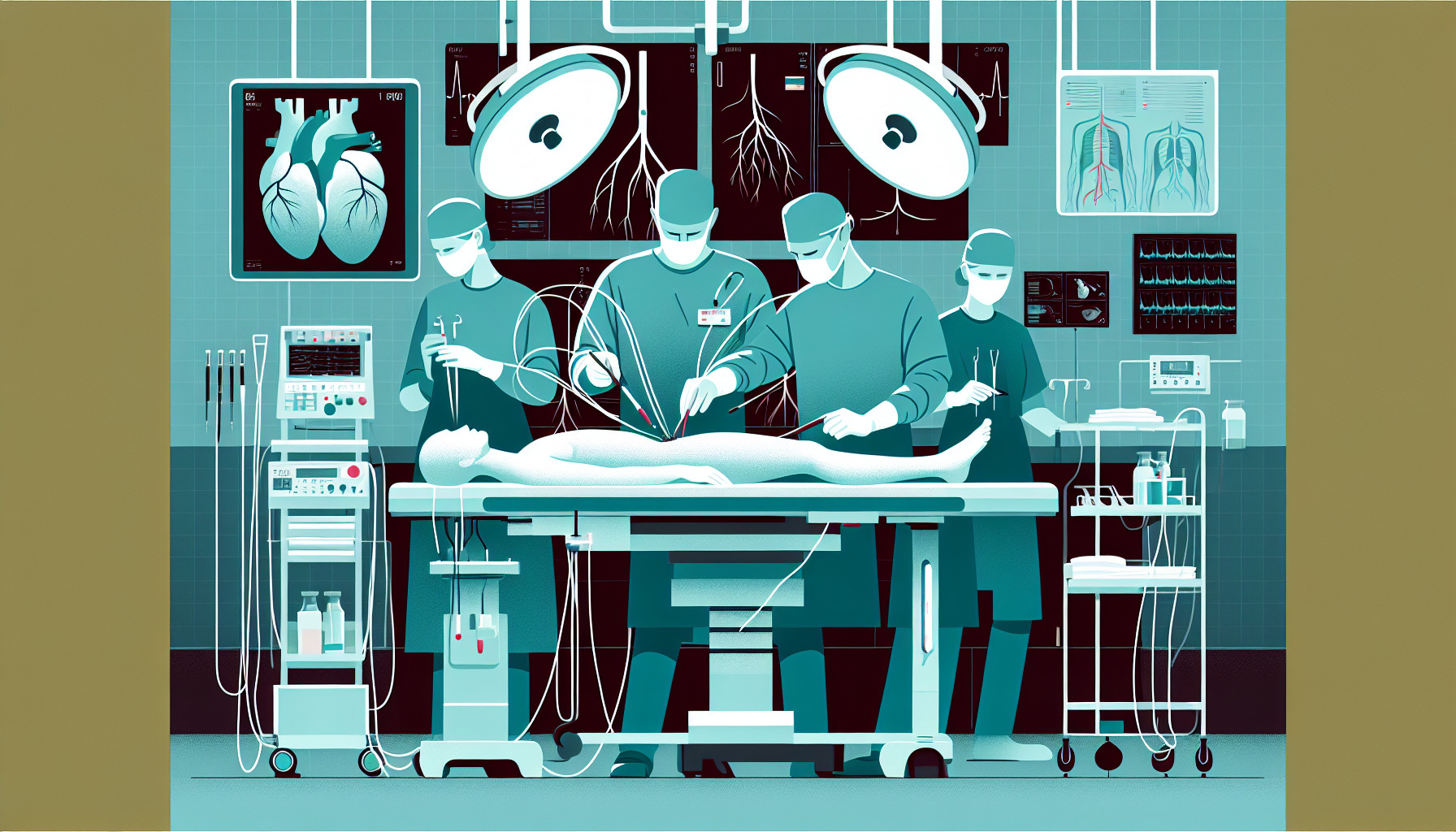Our Summary
This research paper discusses the factors that contribute to the success of bypass surgery. The quality of the material used for the bypass graft plays a significant role in the surgery’s long-term success. The best results are achieved using a patient’s own vein, specifically the great saphenous vein. If this vein is not available, arm veins or the lesser saphenous vein can be used with satisfactory results. However, the quality and size of the vein are crucial. A vein that’s too small, has an increased wall thickness, or shows signs of previous inflammation or varicose veins, poses a risk of the bypass failing early.
The researchers suggest using ultrasound to map the vein before surgery to reduce the risk of readmission and infection after surgery. During this mapping, the chosen vein and its main branches are marked with a permanent marker. They also recommend using bridged incisions to harvest the vein to reduce the risk of wound complications.
The paper notes that using an endoscope to harvest the vein doesn’t seem to offer any benefits over traditional methods for lower limb bypasses, and could actually increase the risk of the bypass failing within a year. To avoid issues caused by wound infection, they suggest deep tunneling of the graft.
FAQs
- What factors contribute to the long-term success of bypass surgery?
- What is the role of preoperative vein mapping in bypass surgery?
- What are the potential risks of using small-caliber veins or veins with postphlebitic changes in bypass surgery?
Doctor’s Tip
It is important to follow your doctor’s recommendation for vein mapping before vascular bypass surgery to ensure the best outcome. Opt for autologous vein graft material, such as the great saphenous vein, for the highest patency rates. Keep your incisions bridged during vein harvesting to reduce wound complications. Deep tunneling of the graft can help prevent issues caused by wound infections.
Suitable For
Patients who are typically recommended vascular bypass surgery are those with peripheral arterial disease, especially in the lower extremities, who have severe arterial blockages that cannot be treated with less invasive methods such as angioplasty or stenting. These patients may have symptoms such as severe leg pain, non-healing wounds, or gangrene. Additionally, patients with diabetes, renal insufficiency, or other comorbidities that increase the risk of complications from peripheral arterial disease may also be candidates for vascular bypass surgery.
Timeline
Before vascular bypass surgery:
- Patient presents with symptoms of peripheral arterial disease, such as leg pain or numbness.
- Diagnostic tests, such as angiography or ultrasound, are performed to determine the location and severity of the blockage in the arteries.
- Surgeon determines the need for vascular bypass surgery based on the results of the diagnostic tests.
- Preoperative evaluation is conducted to assess the patient’s overall health and suitability for surgery.
- Vein mapping is performed to identify suitable veins for the bypass graft.
- Surgical plan is developed based on the findings of the preoperative evaluation and vein mapping.
After vascular bypass surgery:
- Surgery is performed, with the bypass graft being placed to bypass the blocked artery.
- Patient is monitored in the recovery room for complications and to ensure adequate blood flow to the limb.
- Patient is discharged from the hospital once stable, with instructions for postoperative care and follow-up appointments.
- Patient undergoes rehabilitation to regain strength and function in the affected limb.
- Follow-up appointments are scheduled to monitor the success of the bypass graft and address any complications that may arise.
- Long-term monitoring is conducted to ensure the patency of the bypass graft and overall success of the surgery.
What to Ask Your Doctor
- What type of bypass graft material will be used in my surgery?
- What are the potential risks and benefits of using autologous vein versus synthetic graft material?
- How will you determine the best vein for the bypass graft (e.g. great saphenous vein, arm vein, lesser saphenous vein)?
- Can you explain the process of preoperative vein mapping and how it can improve outcomes?
- What measures will be taken to reduce the risk of early failure of the bypass graft?
- Are there any specific postoperative care instructions or precautions I should be aware of to promote graft patency?
- What is your experience and success rate with vascular bypass surgery using autologous vein grafts?
- How will you address any potential wound complications or infections that may arise postoperatively?
- Are there any alternative treatment options or approaches to consider for my vascular condition?
- What long-term follow-up care or monitoring will be necessary after the vascular bypass surgery?
Reference
Authors: Albäck A, Saarinen E, Venermo M. Journal: J Cardiovasc Surg (Torino). 2016 Apr;57(2):292-301. Epub 2016 Feb 2. PMID: 26837257
